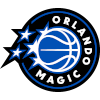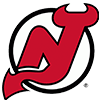In fantasy sports, the most successful owners are the ones who act instead of react. By this, I mean that instead of waiting for transactions to happen, the managers who are proactive are the ones who often end up with season-changing players in fantasy sports. For example, owners who foresaw the tanking Royals trading Jonathan Broxton before last season's trade deadline may also have been the same ones to snag Greg Holland before the transaction actually occurred. Their reward: 16 big, post-All-Star Game saves. As the saying goes, the early bird catches the worm.
With the MLB trade deadline a mere three weeks away, July marks the month in which fantasy owners should be looking ahead. However, some of MLB's new rules regarding free agency may have some interesting effects on this year's trade market, making it more difficult than usual to predict some of the second half's breakout fantasy stars. A detailed analysis of most of the League's new free-agent compensation rules can be viewed in Part One of this column, but here is a quick review:
• Type A and Type B free-agent designations have been eliminated. Teams now have to make a qualifying offer to be eligible for draft-pick compensation.
• The value of a qualifying offer is determined annually by averaging the top 125 player salaries from the previous year. In the 2012-2013 offseason, the qualifying offer was approximately $13 million. All qualifying offers are worth the same amount and for the same duration (one year).
In fantasy sports, the most successful owners are the ones who act instead of react. By this, I mean that instead of waiting for transactions to happen, the managers who are proactive are the ones who often end up with season-changing players in fantasy sports. For example, owners who foresaw the tanking Royals trading Jonathan Broxton before last season's trade deadline may also have been the same ones to snag Greg Holland before the transaction actually occurred. Their reward: 16 big, post-All-Star Game saves. As the saying goes, the early bird catches the worm.
With the MLB trade deadline a mere three weeks away, July marks the month in which fantasy owners should be looking ahead. However, some of MLB's new rules regarding free agency may have some interesting effects on this year's trade market, making it more difficult than usual to predict some of the second half's breakout fantasy stars. A detailed analysis of most of the League's new free-agent compensation rules can be viewed in Part One of this column, but here is a quick review:
• Type A and Type B free-agent designations have been eliminated. Teams now have to make a qualifying offer to be eligible for draft-pick compensation.
• The value of a qualifying offer is determined annually by averaging the top 125 player salaries from the previous year. In the 2012-2013 offseason, the qualifying offer was approximately $13 million. All qualifying offers are worth the same amount and for the same duration (one year).
• If a team doesn't make a qualifying offer, the player eligible for free agency may sign anywhere uninhibited.
• If a team makes a qualifying offer, the aforementioned player may either accept the one-year deal or decline it and enter free agency.
• If a player declines a qualifying offer, he can still re-sign with that team. However, if he signs elsewhere, his new team will have to surrender a top draft pick, subject to some exceptions.
There was, however, one very important rule that wasn't covered in Part One. Only players who have been with their clubs for the entire season will be eligible to receive a qualifying offer. This bears repeating. If a player who is eligible for free agency at the end of the season is released or traded during the season, the new team acquiring that player will not be eligible to receive draft-pick compensation, if that same player leaves his new team via free agency at the end of the season. This explains why the Dodgers were able to sign Zach Greinke, who was traded from the Brewers to the Angels at the trade deadline in 2012, without forfeiting a valuable draft pick. It also explains why the Angels were unable to offer Greinke a qualifying offer to ensure that they would at least receive some compensation when he departed in the offseason.
July marks only the second trade deadline in which the new free agency rules have been in effect. The repercussions on teams' strategies and the trade market, therefore, have yet to be fully determined. Still, we can make some educated guesses on how the trade market will be affected.
In years past, teams have been hesitant to trade for so-called "rental players," or those players who are in their last season under contract and thus eligible for free agency at the end of the year. However, because teams are unable to receive draft-pick compensation, if they acquire a free-agent-to-be at the trade deadline, they may be even further dissuaded from pulling the proverbial trigger on a deal.
Other factors may further work to depress the trade market. As detailed in Part One of the piece, the new rules increase the emphasis and weight of draft picks in MLB's First-Year Player Draft. As a result, teams are loath to surrender valuable prospects in exchange for rental players, particularly when they also lose the opportunity to mitigate those lost prospects through draft-pick compensation.
While these rule changes are all very interesting to a law and economics dork like me, the real question is, how does this information result in a fantasy league championship? As we discussed in the opening paragraph, winning a title can be determined by proactive rather than reactive owners. A depressed trade market, though, doesn't exactly mesh with this mantra. Thus, owners must make their transactions count. The best way to accomplish this goal is grouping the players you're looking to acquire in terms of their likelihood to secure a starting role after the trade deadline.
To begin, owners should be targeting those players who have a high chance of usurping a prominent role in case an incumbent is traded. While it may be difficult to pinpoint who will actually rise to the top of the heap, players such as Blake Parker/Pedro Strop and Antonio Bastardo/Mike Adams are poised to find themselves closing games during the second half of the season, if either Kevin Gregg or Jonathan Papelbon are traded. Gregg, an upcoming free agent, is certainly not worthy of a $13 million qualifying offer, while Papelbon is in the second season of a four-year contract. Each player's situation portends a deal, as they are unaffected by the new rules of free agency.
Moreover, other targets include players who are next in line to impending free agents this coming offseason and worthy of a qualifying offer but are still likely to be traded anyway. We have already seen some transactions involving one of these types of players, as Ricky Nolasco was traded from Miami to Los Angeles. In the thick of the winnable NL West, the Dodgers deemed it worthwhile to acquire Nolasco, despite the fact that they will be unable to offer Nolasco a qualifying offer in order to recoup compensation should he depart Los Angeles at the end of the season. Another name that comes to mind is Matt Garza. With the Cubs essentially out of contention and both parties reportedly far apart on extension discussions, he seems as good as gone. If he is indeed dealt, the recently-acquired Jake Arrieta, a former top prospect with the Orioles who fell out of favor with management, is an interesting proactive pick up, as he is the likely candidate to slot into Garza's vacated rotation spot. As an additional bonus, Arrieta trades a pitcher's nightmare, the American League East, for the more impotent National League.
The final group of players are the most intriguing for our purposes, as they might be tantalizing, stash-worthy players who find themselves blocked from a prominent or starting gig by upcoming free agents and worthy of a qualifying offer but are not likely to be moved for a number of reasons. Players such as Oscar Taveras (blocked by Carlos Beltran), Jackie Bradley (Jacoby Ellsbury), and Billy Hamilton (Shin-Soo Choo) will surprise if they receive consistent playing time at any point in the majors this season, barring an injury, as their respective teams are all in contention and won't deal away the players blocking them.
There are, however, a number of free-agents-to-be who are worthy of qualifying offers and very well could be dealt in the final year of their contract. Such deals would open the door for the high-upside players behind them to step into the spotlight. Yet, the depression of the trade market due to the new free agency rules could scuttle those potential exchanges.
For example, the Braves are very obviously contenders in the NL East. However, the emergence of Evan Gattis could make Brian McCann, who is entering the final season of his contract and is arguably worth of a qualifying offer, expendable. The door would then open for Gattis, the pinch-hit wonder, to earn the full-time gig. Nevertheless, most teams that would be interested in acquiring the former All-Star catcher (the Reds immediately come to mind) may pass at the opportunity under the aforementioned rule changes. By acquiring McCann, his new squad would sacrifice the ability to extend a qualifying offer and at least be compensated, if he decides to depart via free agency. In the end, he'll likely stick with the Braves for the rest of the year, which limits owners' ability to stash Gattis given his insecure playing time.
The following is a list of players who have huge upside, if the opportunity presents itself, but remain high-risk stashes given the market forces working against them: Andres Torres (held down by Hunter Pence), Tommy Joseph (Carlos Ruiz), Cesar Hernandez (Chase Utley), Jameson Taillon (A.J. Burnett), L.J. Hoes (Nate McLouth), Marcus Stroman (Josh Johnson), and Daniel Nava/Mike Carp (Mike Napoli).
While these hypotheticals require somewhat of a case-by-case analysis -- and I am happy to answer any questions in the comments below regarding the likelihood of specific players to be traded -- the revised system and particular market factors working against trading for rental players make it difficult for even proactive owners to pinpoint the eventual moving parts. Thus, it's imperative to make those stashes count, and understanding the elements at work can only help astute owners looking to secure a fantasy title.





































